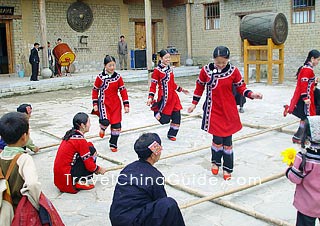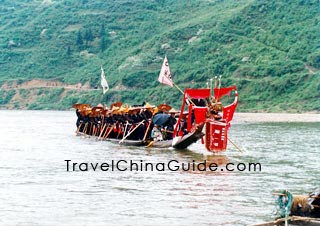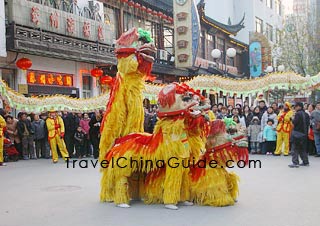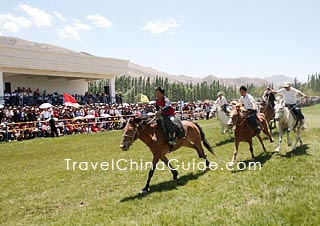Traditional Sports & Activities
It is inevitable that with such a long history China should have developed several unique and traditional sports and pastimes. While some are practiced widely by the Han minority as well as the minority groups who make up these groups and reflect their own cultures. As the country is so large and the various minorities are separated by vast distances it is not surprising that they have their own special ways in which to express their vigor and enthusiasm.
Almost all the traditional sports were derived from productive activity. The Mongolians, Tibetans and Kazaks inhabit vast natural grasslands and horsemanship is vital to their existence. Consequently their gift for riding and shooting has given rise to their forms of sport. The people who live in agricultural communities or who rely on hunting for their livelihood are good at climbing, wrestling, jumping, shooting and so on.
|
|
 |
| Bamboo Pole Dance |
![]() Aerial Sports : This will involve the use of swings, ropes and the springboard, etc.
Aerial Sports : This will involve the use of swings, ropes and the springboard, etc.![]() Aquatic Sports: These encompass swimming, diving and boating events such as the famous dragon boat races.
Aquatic Sports: These encompass swimming, diving and boating events such as the famous dragon boat races.
Dragon Boat Racing (Sai Longzhou)
 |
| Dragon Boat Race |
According to legend, the race became the custom following the rescue of the patriotic poet Qu Yuan in the Warring States Period (476 BC - 221BC) which shows just how old this custom is. As far back as the Sui Dynasty, the Emperor Yan sailed in a large-scale dragon boat with the height of 15 meters (49 feet) and the length of 67 meters (220 feet). The boat contained halls and 120 cabins. It is recorded that there were nine boats, each three storeys high, in use at this time.
In competitions the dragon boat race often appears as a group item. Nowadays the boat is usually around 20 meters (66 feet) long and 1 meter (3.3 feet) wide. A participating team will have oarsmen or oarswomen, a coxswain, a gong beater and a drummer. The oarsmen will row and keep stroke, following the rhythmical drumbeats.
To maintain and encourage the development of these colorful sports, provincial and even national meetings have been held. China's National Games of Minority Nationality's Traditional Sports is one example and is now held every four years. The seventh of these very successful meetings was held in 2003.

